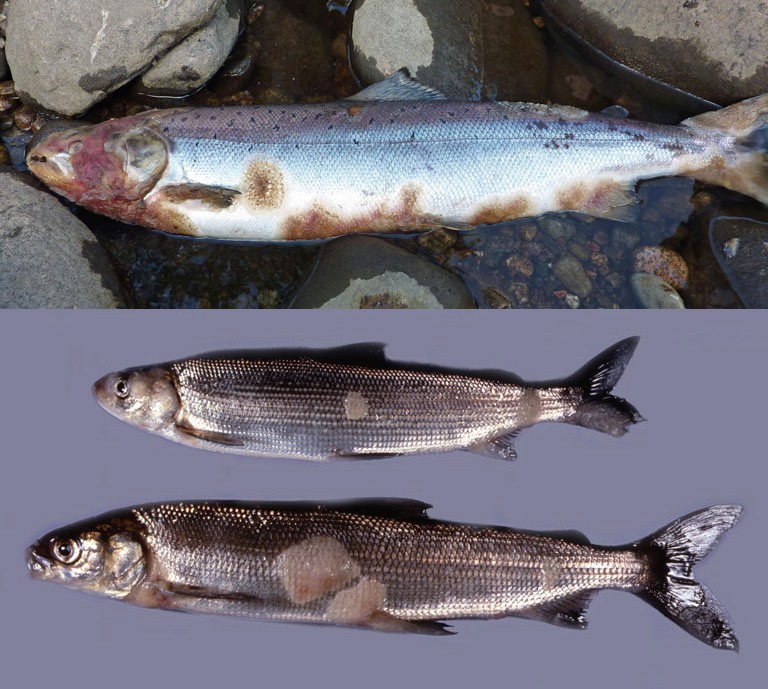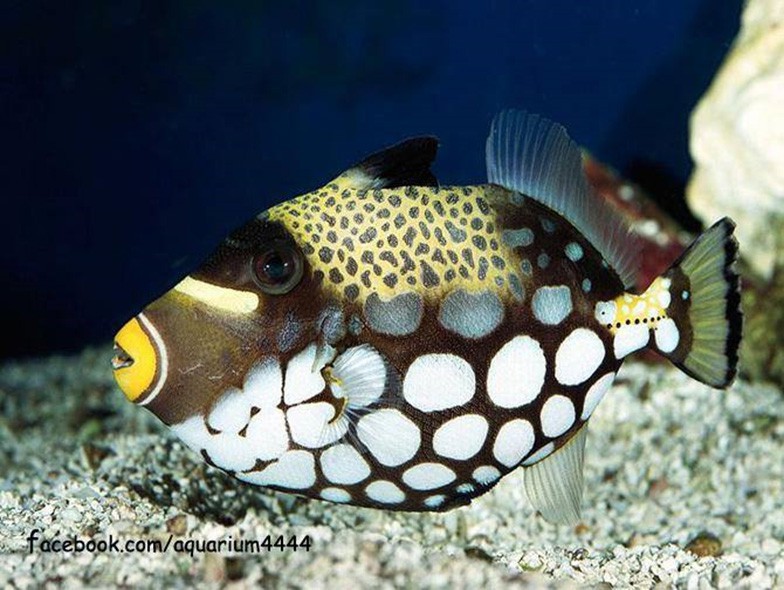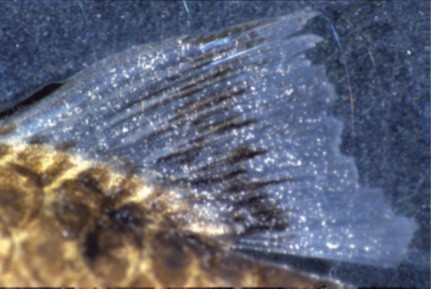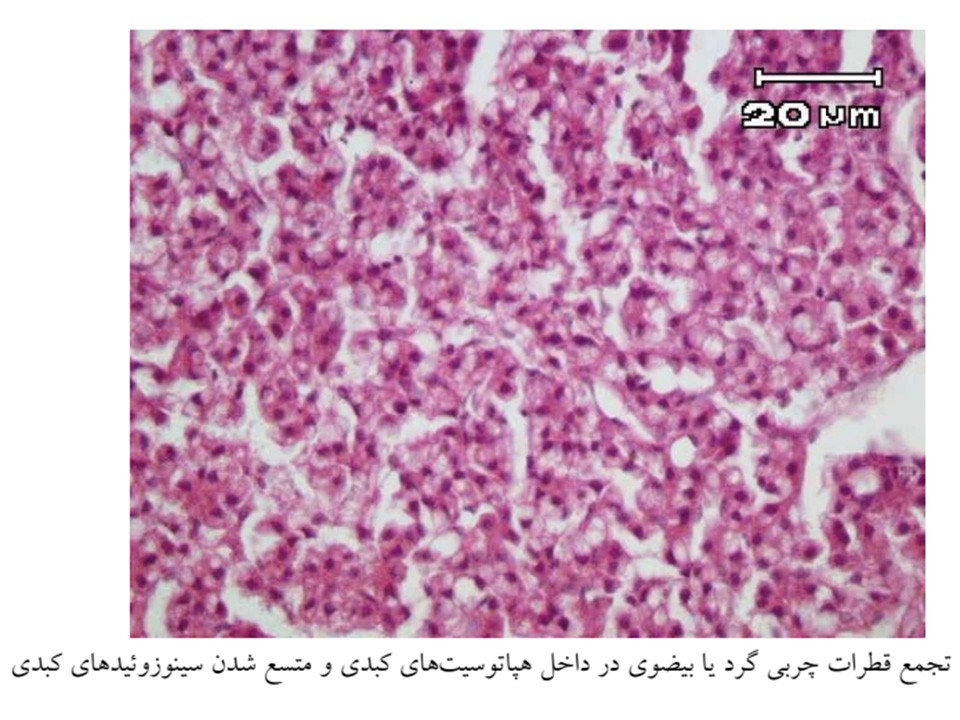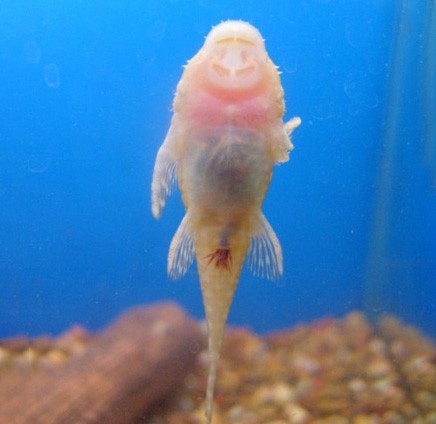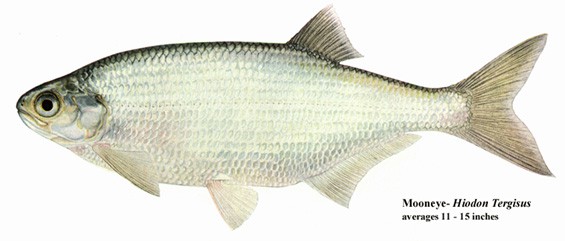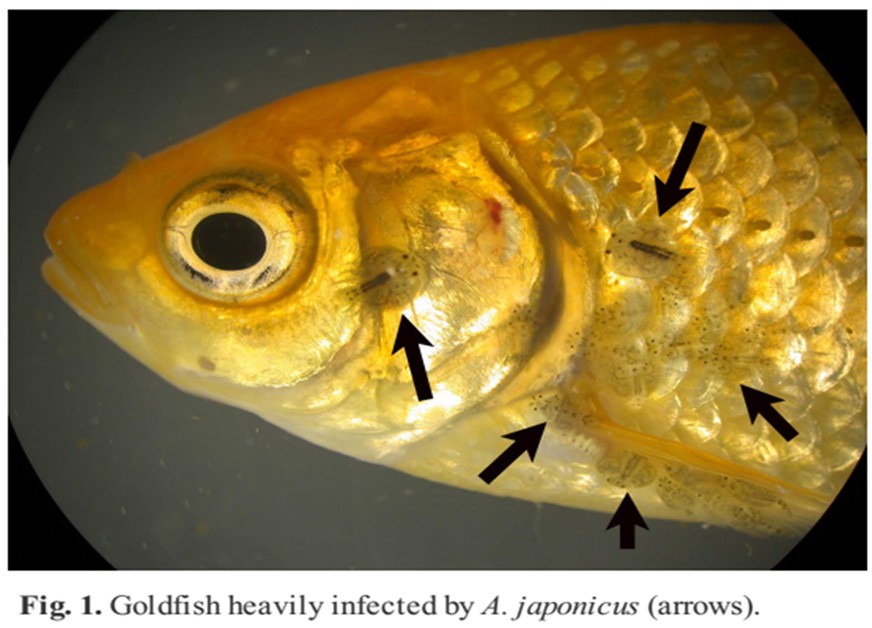Saprolegniosis
جهت مشاهده متن کامل مقاله اینجا کلیک کنید
Typical Water Mold Infection
(Saprolegniosis , Oomycete Infection, Winter Kill)
Epidemiology
-Water molds (class Oomycetes) are one of the most common infections of freshwater fish and are far more common than true fungal infections.
-Water molds are also important pathogens of some estuarine fish in warm temperate and tropical waters. they are distributed worldwide. Virtually every freshwater fish is probably susceptible to at least one species.
The class Oomycetes is divided into four orders, three of which have species that can infect fish (Saprolegniales,Leptomitales, and Peronosporales). The great majority of fish pathogens are in the family Saprolegniaceae (Saprolegniales).
-Water molds are classical opportunists that normally feed saprophytically on dead organic matter. There is increasing evidence that these infections in fish are associated with immunosuppression. Outbreaks often occur after a drop in temperature or when temperatures are near the physiological low end for a particular fish species (Roberts 1989c ). This may be due not only to lower immunity, but also to the fact that many Oomycetes aremore active in the cooler months of the year (Hughes1962 ).
-Skin wounds caused by mechanical trauma or other pathogens provide a portal of entry for water molds (Tiffney 1939a, 1939b ; Scott and O ’ Bier 1962 ).
Handling, crowding, heavy feeding rates, and high organic loads also appear to increase the risk of saprolegniosis.
-When fish are exposed to acute confinement stress, their skin can actually slough off (Udomkusonsri et al. 2004 ) and this severe skin loss makes them much more susceptible to water mold infection (Udomkusonsri and Noga 2005 ).
-When saprolegniosis affects fish during very cold temperatures, it is often called winter kill. The disease occurs when pond temperatures drop below 15 ° C (59 ° F) and often after a cold front has rapidly dropped the temperature.The disease may be caused by immunosuppression because of the rapid temperature drop, possibly in combination with chronically high ammonia levels or exposure
to some environmental stress in the prior summer/ fall. A similar clinical pattern has been observed in channel catfish and hybrid striped bass (S. Gabel, personal
communication).
Transmission
Water molds are ubiquitous saprophytes in soil and freshwater.They are appropriately named, requiring water for growth and sporulation; this differentiates them from most terrestrial (true) fungi that can produce aerial
spores. Most transmission is probably by motile zoospores
(Fig. II - 34 , A) produced by the vegetative hyphae, although other reproductive stages (e.g., gemma) may also be important. The zoospore allows dissemination to distant sites. It is important to realize that most fish infections are probably acquired from inanimate sources (i.e., water molds sporulating on dead organic matter).
ÒSaprolegnia. (Courtesy of Dr L.G. Willoughby.)
Life cycle of water molds (Noga 1993b ).
Saprolegniasis
-This is the term used to describe infection with Saprolegnia parasitica .
-Generally it results in surface infection, but the pathogenesis is complex and the exact role of the oomycete is regularly open to dispute. One significant component of the pathogenesis, however, is the action of the distinctive
recurved attachment hairs, over the surface of the secondary cysts, which may function like a burr. (Pickering & Willoughby 1982 ).
- Another element may be the recently described effector protein elaborated
by the hyphae during a biotrophic stage in the infection process. This is similar to that found in biotrophic and hemibiotrophic plant pathogenic oomycetes and suggests that the pathogen may have an early infection stage, during which it does not kill the host cells but, instead, maintains them under its control.(Van West 2006 ; Phillips et al .2007 ).
Predisposing factors
- the pathogens responsible for saprolegniasis are secondary pathogens, and lesions are commonly seen after handling and after any traumatic damage to the skin, following hormonal changes in the skin associated with smolting or spawning and in conjunction with pollution or bacterial or viral conditions.
Primary saprolegniasis has Primary saprolegniasis has been reported by Hoshina
et al. (1960) and Hoshina and Ookubo (1956) incultured eels without any visible prior injury to the fish.
-Temperature has a significant effect on the development of Saprolegnia infections. Whilst infection following trauma may occur at any temperature compatible with fi sh life, most epizootics occur when temperatures
are low for that fi sh species. Hoshina and Ookubu (1956) and Hoshina et al. (1960) pointed out that sure , a saprolegniasis of eels, ceased when the water temperatures rose above 18 ° C. However, the stress of high temperature may also induce Saprolegnia invasion. Roth (1972) noted that infection in experimental
white suckers generally took place when temperatures exceeded 10 ° C.sh.

